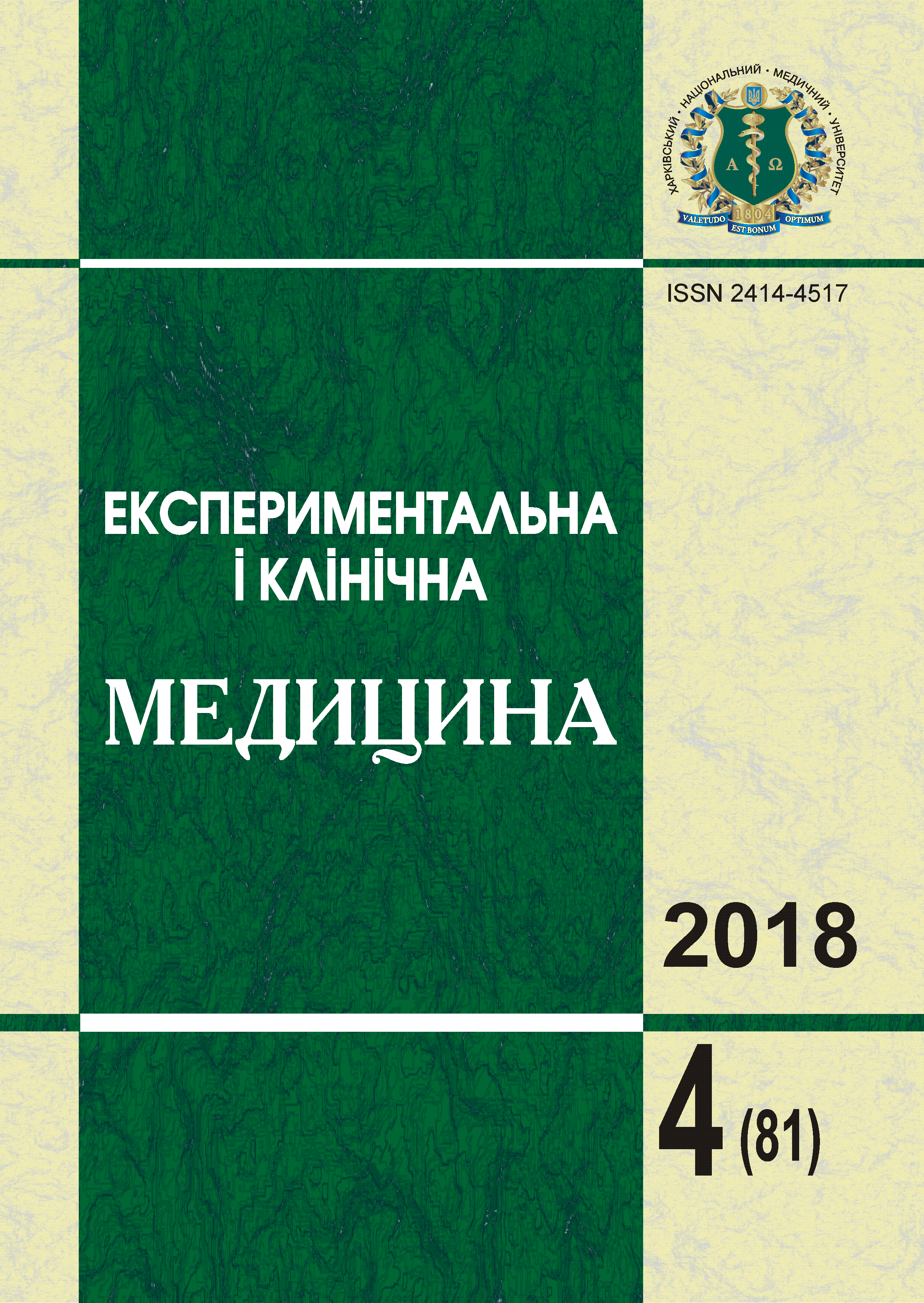Abstract
This observation reflects the methods of additional assessment of non-motor manifestations of Parkinson's disease in the form of orthostatic hypotension syndrome in a small sample (6 patients) and an assessment of the effectiveness of complex therapy for its relief. Basic therapy with non-ergoline dopamine receptor agonist Mirapex (pramipexol) and additional vascular preparations (Ginkgo Biloba, Mildronate, Armadin, Cavinton) were used. A positive assessment was made of the use of this drug complex in the form of reducing the symptoms of autonomic dysfunction in patients with Parkinson's disease, as well as the possibility of preventing complications of the disease.References
Mishchenko T.S. (2012). Voprosy i otvety v nevrolohii: spravochnik vracha [Questions and answers in neurology: a doctor's handbook]. Kiev: OOO «Doktor-Media», 423 p. [in Russian].
Shtok V.N., Ivanova-Smolenskaia I.A., Levin O.S. (Eds.). (2002). Ekstrapiramidnyie rasstroistva: rukovodstvo po diahnostike i lecheniiu [Extrapyramidal disorders: a guide to diagnosis and treatment]. Moskow: MEDpress-inform, 608 p. [in Russian].
Mankovskii N.B., Karaban I.N. (2005). Osobennosti klinicheskoho techeniia i farmakoterapii bolezni Parkinsona na raznykh etapakh razvitiia zabolevaniia [Features of the clinical course and pharmacotherapy of Parkinson's disease at different stages of the development of the disease]. Mezhdunarodnyi med. zhurnal – International Medical Journal, vol. 11, № 4, pp. 47–51. [in Russian].
Braak H., Del Tredici K., Rub V., de Vos R.A., Jansen Steur E.N., Braak E. (2003). Staging of brain pathology related to sporadie Parkinson’s disease. Neurobiol. Aging, vol. 24, pp. 194–211.
Karaban I.M. (2017). Rekomendatsii shchodo diahnostyky ta likuvannia khvoroby Parkinsona (chastyna I) [Recommendations for the diagnosis and treatment of Parkinson's disease (Part I)]. NeiroNEWS – NeuroNEWS, № 9 (92), pp. 33–58 [in Ukrainian].
Karaban I.M. (2017). Rekomendatsii shchodo diahnostyky ta likuvannia khvoroby Parkinsona (chastyna II) [Recommendations for the diagnosis and treatment of Parkinson's disease (Part II)]. NeiroNEWS – NeuroNEWS, № 10 (93), pp. 50–68 [in Ukrainian].
Schapira A., Olanow C.W. (2004). Neuroprotection in Parkinson’s disease: myths, mysteries and misconceptions. JAMA, vol. 291, pp. 358–364.
Golubev V.L., Levin Ya.I, Veyn A.M. (1999). Bolezn Parkinsona i sindrom parkinsonizma [Parkinson's disease and parkinsonism syndrome]. Moscow: Medpress, 416 p. [in Russian].
Karaban I.N. (2018). Levodopa/karbidopa prolonhirovannoho vysvobozhdeniia v lechenii bolezni Parkinsona [Levodopa / carbidopa extended release in the treatment of Parkinson's disease]. Mezhdunarodnyi nevrolohicheskii zhurnal – International Neurological Journal, № 3 (97), pp. 74–75 [in Russian].
Schapira A.H. (2008). The clinical relevance of levodopa toxicity in the treatment of Parkinson’s disease. Mov. Disord., vol. 23 (suppl. 3), pp. 515–520.
Petukhova I.S. (2006). Osoblyvosti nadsehmentarnoi vehetatyvnoi nervovoi systemy i tserebralnoi hemodynamiky u khvorykh z symptomatychnoiu lokalno obumovlenoiu epilepsieiu [Features of the supra-segmental autonomic nervous system and cerebral hemodynamics in patients with symptomatic locally-induced epilepsy]. Extended abstract of Candidate’s thesis. Kharkiv: Institute of Neurology, Psychiatry and Narcology, 20 p. [in Ukrainian].
Olanow C.W. (2007). Pathogenesis of cell death in Parkinson’s disease. Mov. Disord., vol. 22, pp. 335–342.
Olanow C.W., Schapira A.H., Agid Y. (2003). Neuroprotection for Parkinson’s disease: prospects and promises. Ann. Neurol., vol. 53 (suppl. 3), pp. 1–2.

